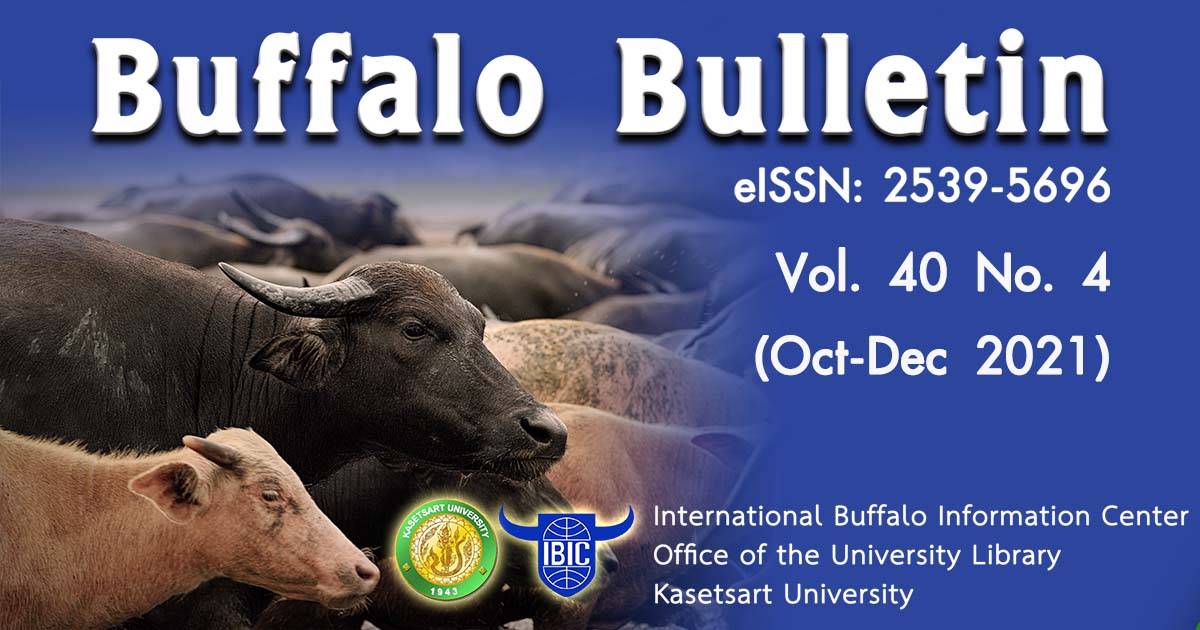Dystocia due to conjoined twin monster in a non descript buffalo
Keywords:
Bubalus bubalis, buffaloes, conjoined twin monsterAbstract
A rare case of dystocia in a pluriparous nondescript buffalo due to conjoined twin monster was presented at Teaching Veterinary Clinical Complex with the history of full term gestation and labor since 8 h. A dicephalus, tetraophthalmus, tetraotus, tetrabrachius, thoracoabdominopagus conjoined twin monster calf was delivered per-vaginum successfully under epidural anaesthesia.
Downloads
Download data is not yet available.
Metrics
Metrics Loading ...
References
Baddi, S.Y., K.H. Gowda, G.T. Naveenkumar and V. Ramkrishna. 2012. Dicephalus tetrapus tetrabrachius in buffalo. Indian Vet. J., 89(12): 83-84.
Bahr, C. and O. Distle. 2005. Frequency of congenital anomalies in cattle: Results from the practice in comparison with literature. Deut. Tierärztl. Woch., 112(4): 149-154.
Babu, R., A. Pierro, L. Spitz, D.P. Drake and E.M. Kiely. 2000. The management of oesophageal atresia in neonates with right-sided aortic arch. J. Am. Vet. Med. Assoc., 35(1): 56-58. DOI: 10.1016/S0022-3468(00)80013-5
Honnappagool, S.S., M.H. Tandle and V. Ramakrishna. 2005. Thoraco abdominopygophagus foetal monster in a non-descript cow. Indian Vet. J., 82: 441.
Noakes, D.E. 2009. Veterinary Reproduction and Obstetrics, 9th ed. Saunders Publisers, England. p. 217.
Noden, D.M. and A.D. Lahunta. 1984. Embryology of Domestic Animals Developmental Mechanisms and Malformations, 1st edn. Williams and Wilkins, Valtimore, London, UK.
Pandey, A.K., G. Singh, N.S. Bugalia, R.N. Choudhary, S. Kumar and S. Sunder. 2013. Dystocia due to monstrosity of cranial duplication in buffalo. Indian Vet. J., 90(4): 103-104.
Roberts, S.J. 1977. Veterinary Obstetrics and Genital Diseases, 2nd ed. CBS Pubishers and Distributors, Delhi, India. 70p.
Roberts, S.J. 1986. Veterinary Obstetrics and Genital Diseases, 3rd ed. Edwards Brothers. Inc. Ann Arbor, Michigan, USA.
Ravikumar, K., M. Selvaraju and S. Manoharan. 2012. Dystocia due to “Dicephalus Tetrabrachius Thoracopagus Tetrapus Dicaudatus” monster in a Jersey crossbred cow. Indian Vet. J., 89(8): 96-97.
Simon, M.S., B.J. William and T.A. Kannan. 2009. A rare case of conjoined twin monster (Ischiopagus) in a she buffalo. Indian J. Anim. Reprod., 30: 90-91.
Bahr, C. and O. Distle. 2005. Frequency of congenital anomalies in cattle: Results from the practice in comparison with literature. Deut. Tierärztl. Woch., 112(4): 149-154.
Babu, R., A. Pierro, L. Spitz, D.P. Drake and E.M. Kiely. 2000. The management of oesophageal atresia in neonates with right-sided aortic arch. J. Am. Vet. Med. Assoc., 35(1): 56-58. DOI: 10.1016/S0022-3468(00)80013-5
Honnappagool, S.S., M.H. Tandle and V. Ramakrishna. 2005. Thoraco abdominopygophagus foetal monster in a non-descript cow. Indian Vet. J., 82: 441.
Noakes, D.E. 2009. Veterinary Reproduction and Obstetrics, 9th ed. Saunders Publisers, England. p. 217.
Noden, D.M. and A.D. Lahunta. 1984. Embryology of Domestic Animals Developmental Mechanisms and Malformations, 1st edn. Williams and Wilkins, Valtimore, London, UK.
Pandey, A.K., G. Singh, N.S. Bugalia, R.N. Choudhary, S. Kumar and S. Sunder. 2013. Dystocia due to monstrosity of cranial duplication in buffalo. Indian Vet. J., 90(4): 103-104.
Roberts, S.J. 1977. Veterinary Obstetrics and Genital Diseases, 2nd ed. CBS Pubishers and Distributors, Delhi, India. 70p.
Roberts, S.J. 1986. Veterinary Obstetrics and Genital Diseases, 3rd ed. Edwards Brothers. Inc. Ann Arbor, Michigan, USA.
Ravikumar, K., M. Selvaraju and S. Manoharan. 2012. Dystocia due to “Dicephalus Tetrabrachius Thoracopagus Tetrapus Dicaudatus” monster in a Jersey crossbred cow. Indian Vet. J., 89(8): 96-97.
Simon, M.S., B.J. William and T.A. Kannan. 2009. A rare case of conjoined twin monster (Ischiopagus) in a she buffalo. Indian J. Anim. Reprod., 30: 90-91.
Downloads
How to Cite
Singh, B., Singh, K. P., & Kumar, R. (2021). Dystocia due to conjoined twin monster in a non descript buffalo. Buffalo Bulletin, 40(4), 661–663. Retrieved from https://kuojs.lib.ku.ac.th/index.php/BufBu/article/view/3120
Issue
Section
Case Report





.png)








